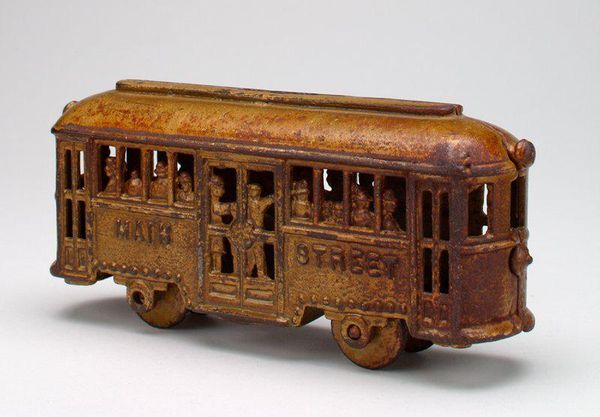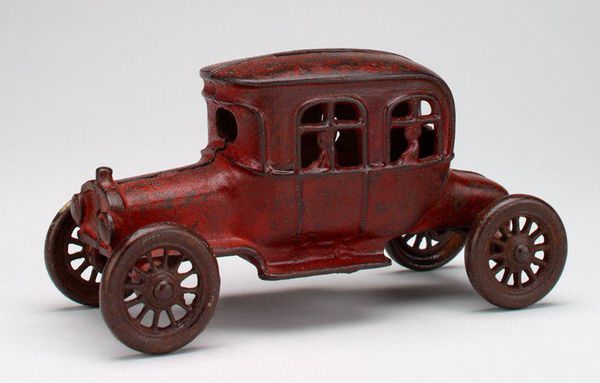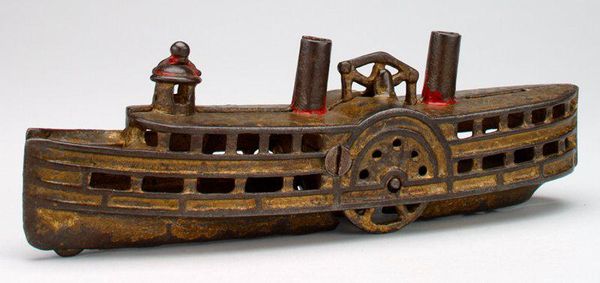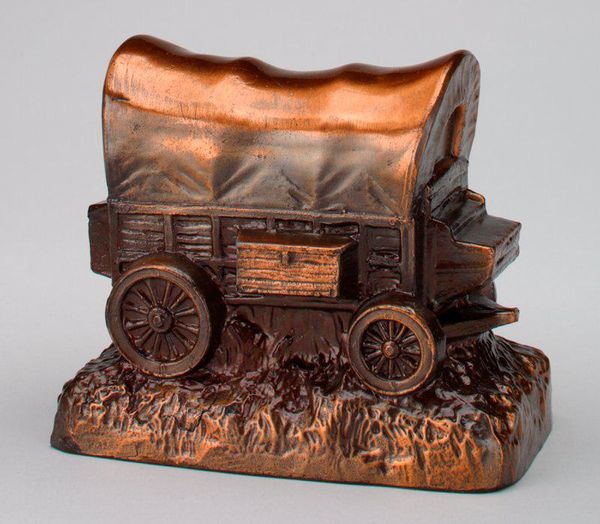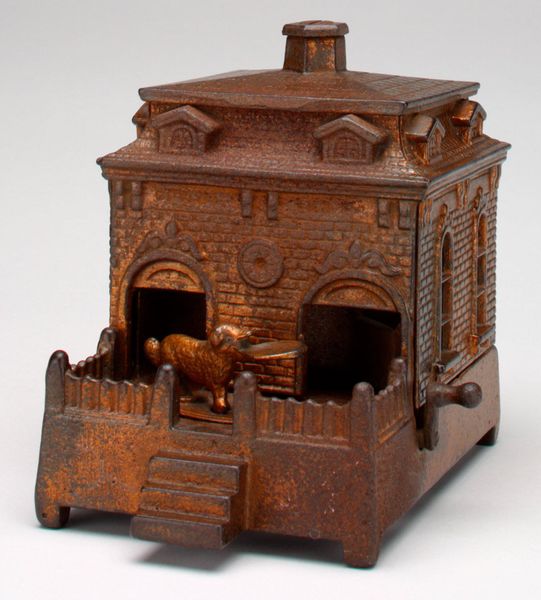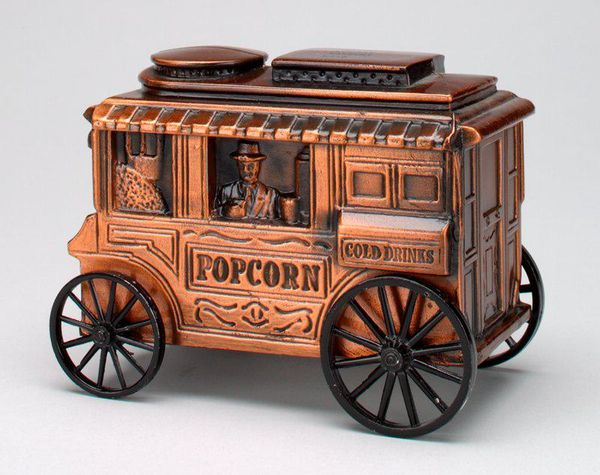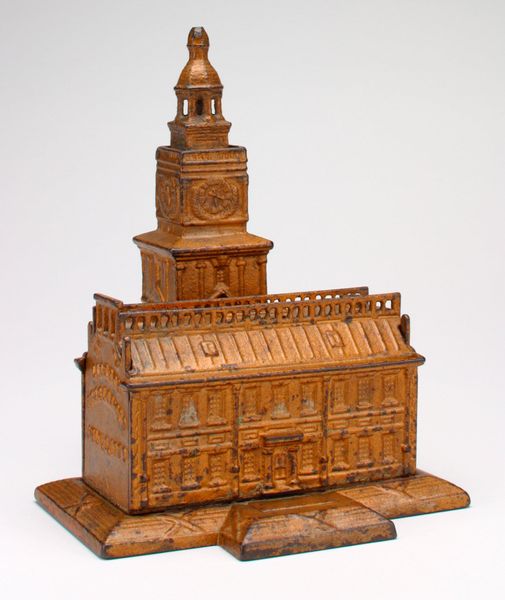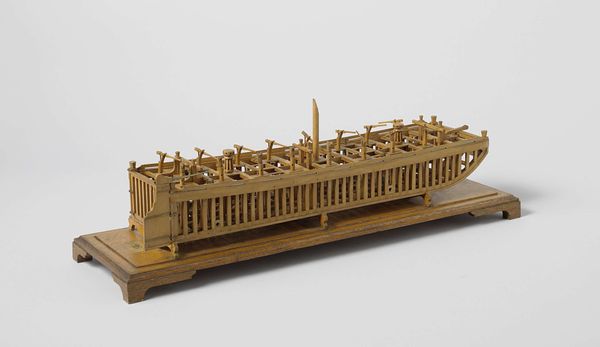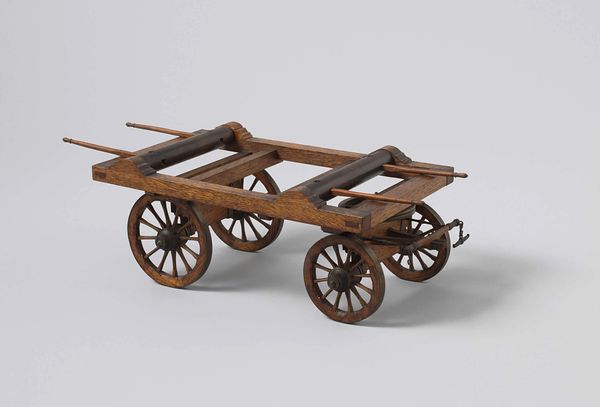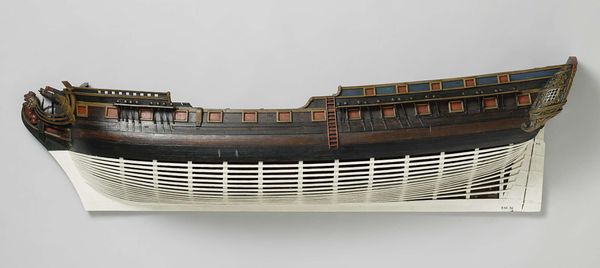
pigment
#
natural stone pattern
#
3d sculpting
#
pigment
#
sculpture
#
sculptural image
#
traditional architecture
#
unrealistic statue
#
3d shape
#
stoneware
#
sculpting
#
statue
Dimensions: 3 1/8 x 6 13/16 x 1 7/8 in. (7.94 x 17.3 x 4.76 cm)
Copyright: No Known Copyright
Editor: So, here we have this cute little thing – *Main Street Trolley*, created around the 1920s by A.C. Williams Company. It seems to be made of painted stoneware and, well, it's just adorable! There’s something wonderfully nostalgic and miniature about it, and the colors are aged, giving it an antiquated appearance. What do you make of it? Curator: Well, my initial thought? This piece isn't just cute; it's a fascinating peek into a bygone era of craftsmanship and urban life, like holding a memory in your hand. Can’t you almost hear the clatter of its tiny wheels and the murmur of unseen passengers, trapped forever in their commute? What does Main Street mean to you? Editor: I suppose I hadn't thought much about Main Street at all, other than being the center of a town. Curator: Exactly, for some reason. But A.C. Williams has transformed a mundane street car into a tiny narrative of Americana and local life, hasn't he? The patinated bronze makes it seem unearthed, somehow. The lettering feels monumental, yet so intimate at the same time! Do you see something else there? Editor: I suppose that makes sense. Thinking about it now, it might reflect some of the hope that comes with transportation and possibility, despite everything that can go wrong. It's almost sad in some ways, maybe? Curator: Precisely! Or think of it this way – like a miniature stage, where lives intersect and diverge, captured in this diminutive bronze shell of what has gone by. Now doesn't it all seem more poetic? Editor: Yeah! It actually does. I guess I didn't realize there was so much hiding behind this miniature transit vehicle. Thanks! Curator: My pleasure. Art often plays tricks with our perceptions, like that, doesn't it? It encourages us to look beyond surfaces and into our own stories as we consider theirs.
Comments
No comments
Be the first to comment and join the conversation on the ultimate creative platform.
